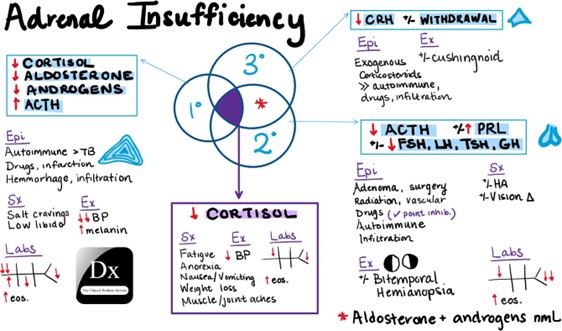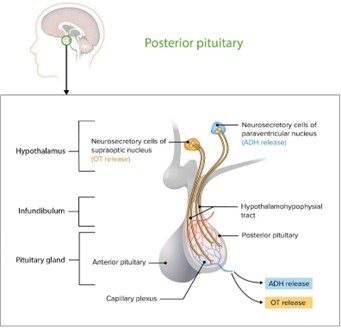A 46-year-old female patient presents to the emergency department with acute adrenal insufficiency and the following vital signs: P 118 beats/min, R 18 breaths/min, BP 83/44 mm Hg. pulse oximetry 98%. and T 98.8 F oral.
Which nursing intervention is the highest priority for this patient?
Administering furosemide (Lasix)
Replacing potassium losses
Providing isotonic fluids
Restricting sodium.
The Correct Answer is C
The patient's vital signs suggest that she is experiencing hypotension, tachycardia, and possibly dehydration due to acute adrenal insufficiency. The highest priority nursing intervention for this patient is to provide isotonic fluids to restore intravascular volume and blood pressure. This will also help to correct any electrolyte imbalances that may be present. Administering furosemide (Lasix) or replacing potassium losses may be necessary interventions, but they are not the highest priority at this time. Restricting sodium would be contraindicated in this situation as the patient is hypotensive and needs fluids to increase intravascular volume.

Nursing Test Bank
Naxlex Comprehensive Predictor Exams
Related Questions
Correct Answer is B
Explanation
Intravenous drug use is a significant risk factor for hepatitis C transmission. The other options are not necessarily related to hepatitis C transmission. However, having a blood transfusion before 1992 or receiving an organ transplant before 1992, having a history of receiving blood products or clotting factor concentrates before 1987, and having been born to a mother with hepatitis C are also considered significant risk factors for hepatitis C transmission.

Correct Answer is D
Explanation
Demeclocycline is a tetracycline antibiotic that can be used to treat SIADH, a condition characterized by excessive water retention and a decrease in urinary output. Demeclocycline blocks the action of antidiuretic hormone (ADH), which can help increase urinary output and decrease water retention in patients with SIADH. Therefore, an increase in urinary output would indicate that demeclocycline is effective in treating the patient's SIADH. Options a, b, and c are incorrect because they do not directly relate to the mechanism of action of demeclocycline in treating SIADH.

Whether you are a student looking to ace your exams or a practicing nurse seeking to enhance your expertise , our nursing education contents will empower you with the confidence and competence to make a difference in the lives of patients and become a respected leader in the healthcare field.
Visit Naxlex, invest in your future and unlock endless possibilities with our unparalleled nursing education contents today
Report Wrong Answer on the Current Question
Do you disagree with the answer? If yes, what is your expected answer? Explain.
Kindly be descriptive with the issue you are facing.
